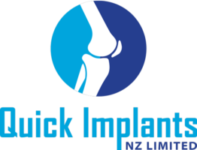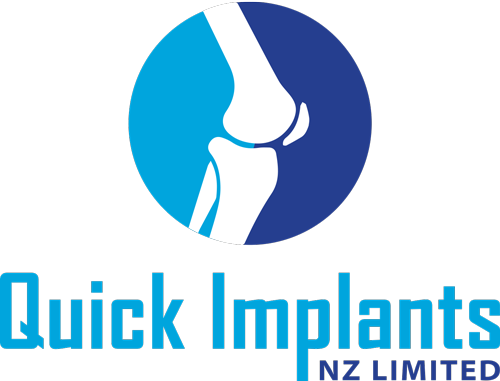PEEK and its variants in Orthopedic Implants
What is PEEK?
PEEK is a hard and stiff thermoplastic that finds use in a variety of applications ranging widely from aerospace to medical implants. Polyether ether ketone or PEEK as it is commonly known in the industry was discovered in the 1960s. However, it was not until the 1980s that it was first commercially produced. Its first use in biomedical applications came nearly 2 decades later in 1998 (1). Today it has a well-established application as orthopedic implants due to its excellent performance in this regard (2). PEEK belongs to the league of high-performance polymers. It is a strong thermoplastic that can retain its properties and performance in extreme conditions. Such conditions include high temperature, mechanical stress, and harsh chemicals and solvents that would otherwise destroy common commodity plastics like polypropylene and polyethylene. These extreme conditions can be artificial such as inside an automotive engine. It can also be in the natural environment such as in the human body. Or in an extraterrestrial environment.
PEEK is a synthetic plastic made up of a repeating unit of two aromatic ethers and an aromatic ketone attached linearly along the polymer chain (2). Its excellent mechanical properties are attributed to the combination of compounds within its structure. It is thermoplastic and as such can be processed relatively easily compared to metals. It is biocompatible and therefore suitable for biomedical applications such as its use in orthopedic implants. PEEK has good resistance to radiation (4). This coupled with its high temperature and chemical resistance means it is suited for various forms of sterilization. This is a very important property for its application in biomedical implants where methods such as heat, gamma, and ethylene oxide sterilization are a requirement. PEEK is so chemically inert that it can only dissolve in 98% sulfuric acid (6). Commercial brand names for PEEK include Victrex, APTIV, GASTONE, and Arlon amongst others.
Low cost of production
PEEK is compatible with conventional and contemporary low cost, mass reproducible processing techniques used in the plastic industry. Because it is a thermoplastic, PEEK can be produced using well-established processes such as injection molding and thermoforming as well as more contemporary additive manufacturing methods like 3D printing (5). Unlike some high-performance polymers which might require special conditions for manufacturing. For example, nylon needs additional drying whereas PEEK has very good moisture resistance. And silicone which is a thermoset thus cannot be 3D printed.
Flexible With Impressive Strength
As a high-performance semi-crystalline plastic PEEK must withstand multidirectional mechanical stress. Particularly when used in orthopedic implants. These implants must be able to withstand the mechanical stress from exerted body weight as well as the range of motion required for everyday life. In some cases, these include the moderate to extreme movements and stress required for sports and endurance activities. With a tensile strength of 170MPa and a modulus of 3.6 GPa (7), PEEK is strong enough to serve as a durable material for orthopedic implants. PEEK has a glass transition temperature of 143oC and a melting point of 343oC. Its service temperature can be as high as 180oC to 240oC (7). These are high values compared to a commodity plastic like polypropylene with a tensile strength of around 31MPa, an elastic modulus of 1.9GPa, and a melting point of around 160oC (9). Its high thermal resistance means it does not lose its mechanical strength and properties even after going through the higher thermal and mechanical stress required for its processing into the desired shape and form for orthopedic application. Further with its excellent wear and chemical resistance, it retains its properties and forms for several years after it is implanted. This removes the need for replacement surgery due to degradation or reaction.
Allows for Better Load Distribution and Fusion
PEEK’s mechanical property closely mimics that of cortical bone. This makes it an excellent choice for vertebral fusion procedure (4). While orthopedic implants need to retain good strength, what is more, important is that they mimic the natural mechanical properties of the original tissue. This is where PEEK makes a better material than metal implants such as titanium. Bone tissue growth and renewal is in part stimulated by load-bearing. Where a bone tissue or portion of tissue is shielded from stress due to the stress being concentrated on the implant, this results in the wasting away of the bone tissue. This is referred to as stress shielding (5) and results ultimately in the clinical failure of the implant. The implant must allow load distribution to the other bones thus preventing bone loss and stress shielding. With its combination of strength and flexibility, PEEK allows for efficient design detail that promotes good load distribution. This is particularly important in load-bearing implants such as hip and femoral implants. Titanium on the other hand has a tensile strength higher than 330MPa. This is at least twice that of natural bone (8). This makes load distribution more difficult resulting in more chance of clinical failure with titanium implants. In this regard, PEEK makes a superior material for orthopedic implants.
Unique Custom manufacturing as per patient requirement using additive manufacturing
PEEK being a thermoplastic means it can be processed using low cost and fast manufacturing methods. For mass production injection molding can be used for the production of high volumes with great precision (10). In biomedical implant applications, it is often the case that parts get custom made in much smaller volumes to meet individual patient requirements to precision. For example, the shape and size of bones vary from individual to individual. Thus additive manufacturing processes are more common in such applications. PEEK is well suited for additive manufacturing with processes such as 3D printing (5). With such processes, parts can get made much quicker, at a lower cost, and with great precision. PEEK has a melting point of 343oC (7). This is much lower than that of its competing material, titanium which melts at over 1600oC (8). This means much less energy is spent in product formation hence reducing the production cost.
PEEK gets fabricated to meet the complex geometric detail that conforms to the physiological form thus reducing the chances of failure. PEEK is available in different grades and for a variety of features to suit orthopedic requirements. These can include surface modifications and coating, composite formation, or making porous. These allow for better osseointegration of the implant. The processing of PEEK to modify its properties is much
less costly than the modification of metals. These often require alloying with other metals such as chromium and gold to improve biocompatibility and mechanical properties (8).
PEEK has good radiolucency which makes it visible through MRI scans (4). Thus allowing for better positioning and monitoring of implants in vivo. This further puts it above metals like titanium and steel implants which are opaque to radio waves (3). The radiolucency of PEEK means surgeons can better view implants and more efficiently monitor progress. This saves time and hence the cost of treatment.


